.png)
March 11, 2025 at 10:08 AM IST
For 10 days, Pedwali had not been seen. Her cubs waited in the thick elephant grass near Kinanoli guest house, their expectant faces searching for a mother who had not returned. The jungle, so full of life, had begun to feel eerily silent when it came to her.
None of the safari guides or drivers had spotted her, and whispers of concern ran through the park. It was natural for a mother tigress to leave her cubs for long stretches—this was how they learned independence—but something felt different this time. While Choti Paarwali, her sister, was seen once every two days, Pedwali was not to be seen.
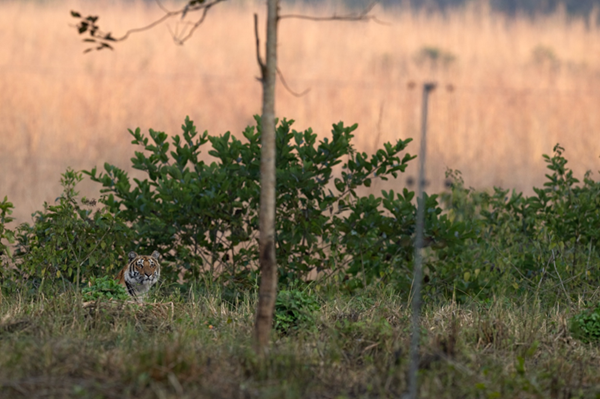
One of Pedwali’s cubs stepped out of the tall grass to take a peek
It is believed when the mother prepares the cubs for separation, mostly when they are about 18 months old, she leaves them for longer periods.
Pedwali earned her moniker for her unusual ability to climb trees, not as a leopard would, but with an effort rare for a tiger. It became her signature, along with her habit of scaling fallen tree trunks to mark her territory.
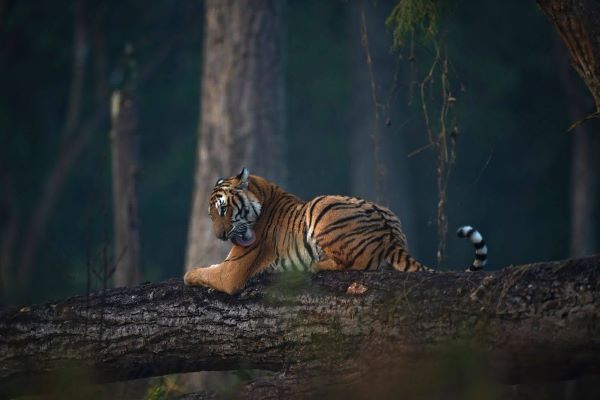 Pedwali, grooming herself on a fallen tree trunk. File photo from 2023
Pedwali, grooming herself on a fallen tree trunk. File photo from 2023
Paro
Pedwali’s story was intertwined with that of her mother, the legendary Paro, also known as the original Paarwali. Paro had built her territory across the Ram Ganga River (hence her name, Paarwali), an area of both abundance and danger. Her litter of three female cubs—Pedwali, Choti Paarwali, and Getero Wali—grew up in a land ruled by strength.
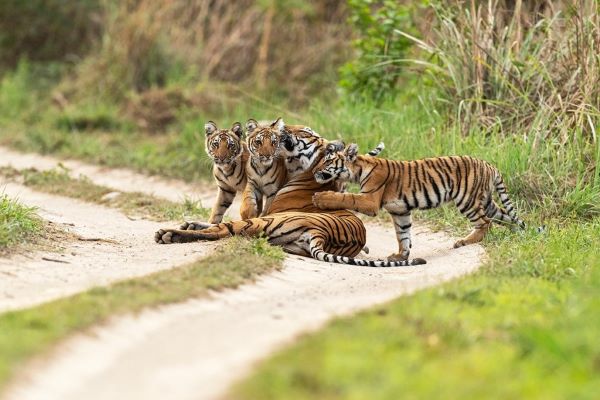 File photo of Paro with her three cubs—Pedwali, Choti Paarwali, and Getero Wali.
File photo of Paro with her three cubs—Pedwali, Choti Paarwali, and Getero Wali.
As they matured, Paro’s reign came to an end, and her territory was split between her daughters. Choti Paarwali took the land beyond the Ram Ganga, stretching up to the Kanda range. Pedwali ruled from the middle of the Ram Ganga to Sambar Road, extending into the main forest track and the adjoining grassland. Getero Wali was last seen in the early days of separation before disappearing into a tourist-free zone, a ghost of the jungle.
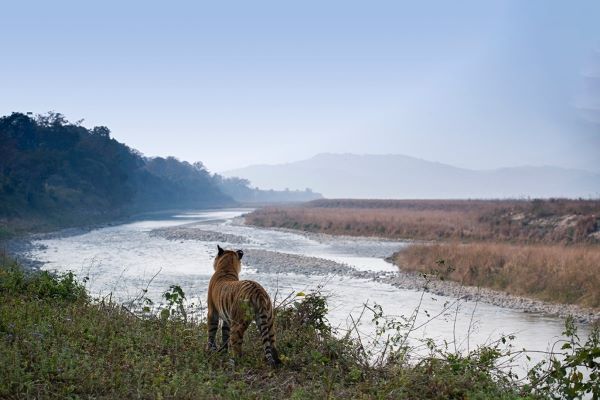 Paro, gazing over the Ram Ganga, once her domain. A file photo.
Paro, gazing over the Ram Ganga, once her domain. A file photo.
Reunion
Choti Paarwali is also known for her long absences from her cubs. Unlike Pedwali, however, she returned every two days. Our vehicle first spotted her at the edge of her territory, high up in Kanda, making her way down towards the Ram Ganga, where her cubs were waiting.
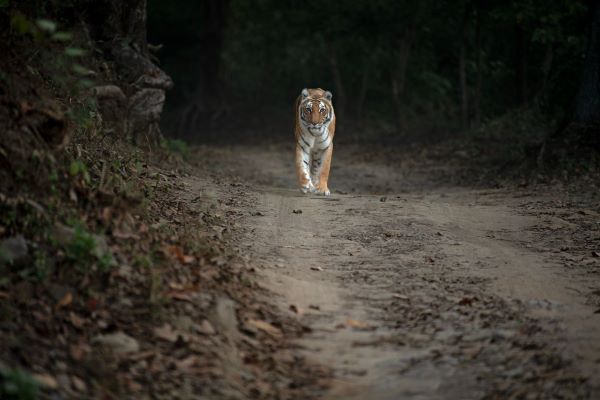 Choti Paarwali making her way towards the river from her perch in Kanda.
Choti Paarwali making her way towards the river from her perch in Kanda.
At first, it was one cub that ran our to meet her.
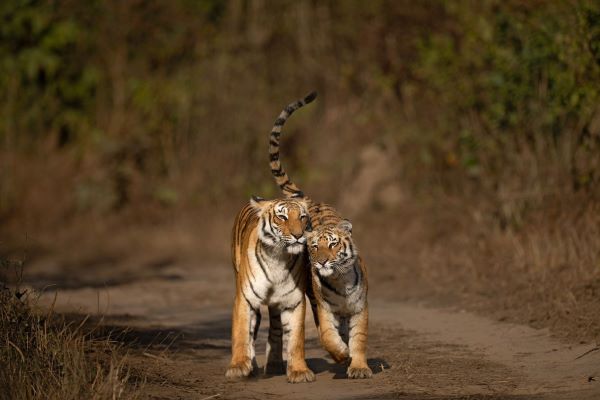
Then, the other joined in.
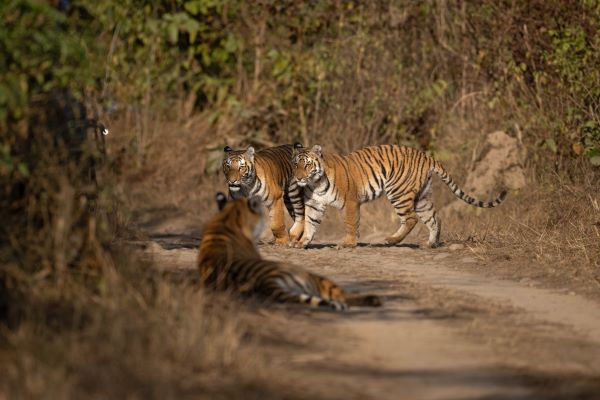 Choti Paarwali and her cubs reunite after her successful, nonchalant hunt.
Choti Paarwali and her cubs reunite after her successful, nonchalant hunt.
The third one preferred to stay in the bushes, and the mother, with the two siblings in tow, decided to go to the sulking cub.
The Choti Paarwali’s cubs kept themselves entertained in their mother’s absence.
While waiting, the cubs decided to traumatise another cat – a leopard. A charge by them had the leopard covering up in a tree. If any of these cubs had picked up a trait or two from their aunt, climbing a tree to go after the shaken leopard would not have been a problem.
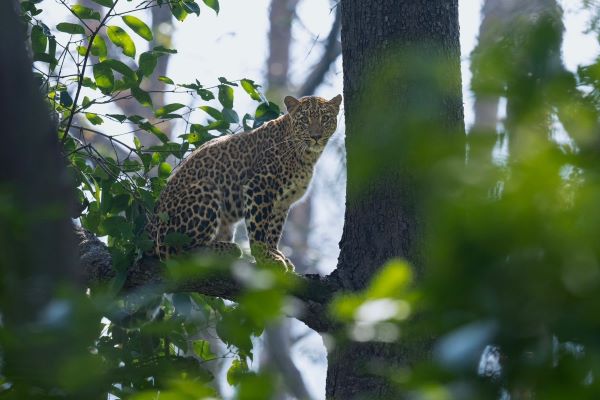 It’s a cat-eat-cat world – a tiger-traumatised leopard.
It’s a cat-eat-cat world – a tiger-traumatised leopard.
The Majestic Herds of the Ram Ganga
As we circled the park, we often returned to the grasslands to watch the elephant herds.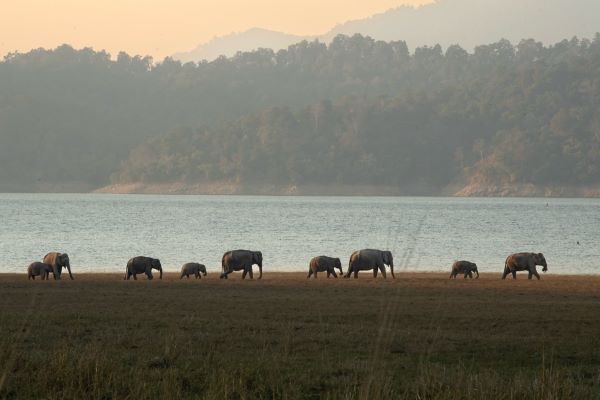
A majestic herd of elephants near the Ram Ganga.
Unlike the solitary lives of tigers, elephants moved in groups, the young ones protected not just by their mothers but by an entire family of aunts and older sisters. Their world was one of unity, a stark contrast to the lonely paths of Pedwali’s cubs.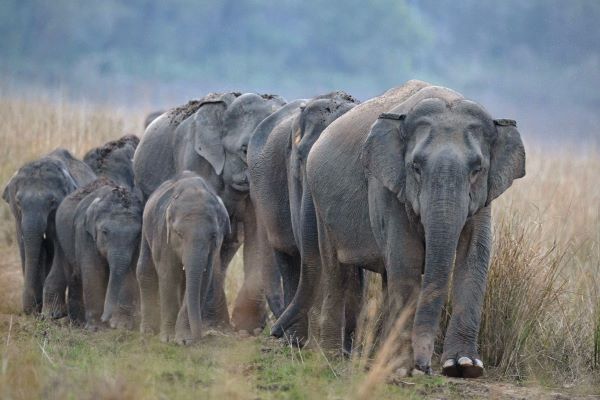
Protection Is A Shared Responsibility
Heavy Heart
Choti Paarwali’s return brought some relief, but our concern for Pedwali deepened. We had seen her cub on the second day of our trip, while others had spotted them on previous days, waiting in the grass for their mother. We left with a heavy heart, hoping she was not injured—or worse.
As we were reaching New Delhi and meandering through peak traffic to reach our hotel, we spoke to our guide, Sohan Negi. His voice was calm, as if the past few days of subtle anxiety had not existed.
“Pedwali has been sighted,” he remarked with casual ease. “She was spotted along the banks of the Ram Ganga in the Getero region.”
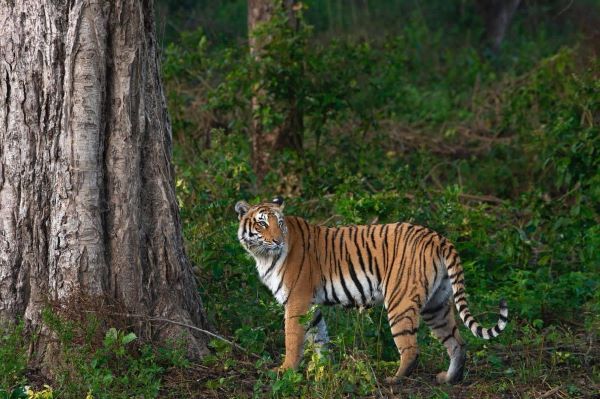 File photo of Pedwali, which was finally spotted near the make-shift bridge across a Ram Ganga stream.
File photo of Pedwali, which was finally spotted near the make-shift bridge across a Ram Ganga stream.
The Cycle Continues
Paro had once ruled this land with daring confidence, often leaving her cubs for long stretches, knowing they had to learn to survive without her. She had lost cubs to other tigers and the harshness of the wild. Perhaps now, her daughters were doing the same to their offspring.
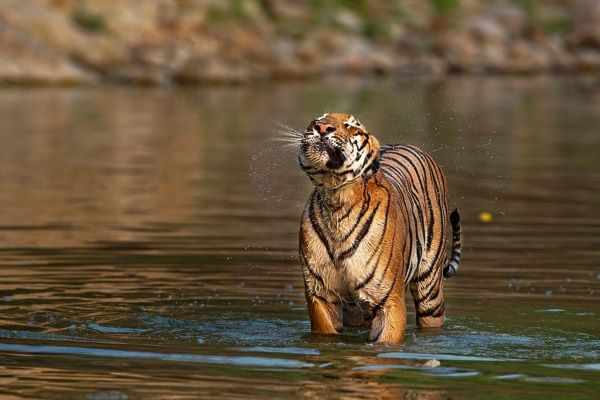
Paro, the legacy continues. Picture from the vault of Shivaram Subramaniam
In the jungle, mothers do not coddle. They teach, they push, and then they leave. For Pedwali’s cubs, the lesson had begun.
As we drove out of Corbett, the jungle closed in behind us, as if swallowing our presence whole. We had our answers in the end, but the mysteries of the wild never end.
This is the account of events in the second week of February 2025
Photos by Shivaram Subramanium.



